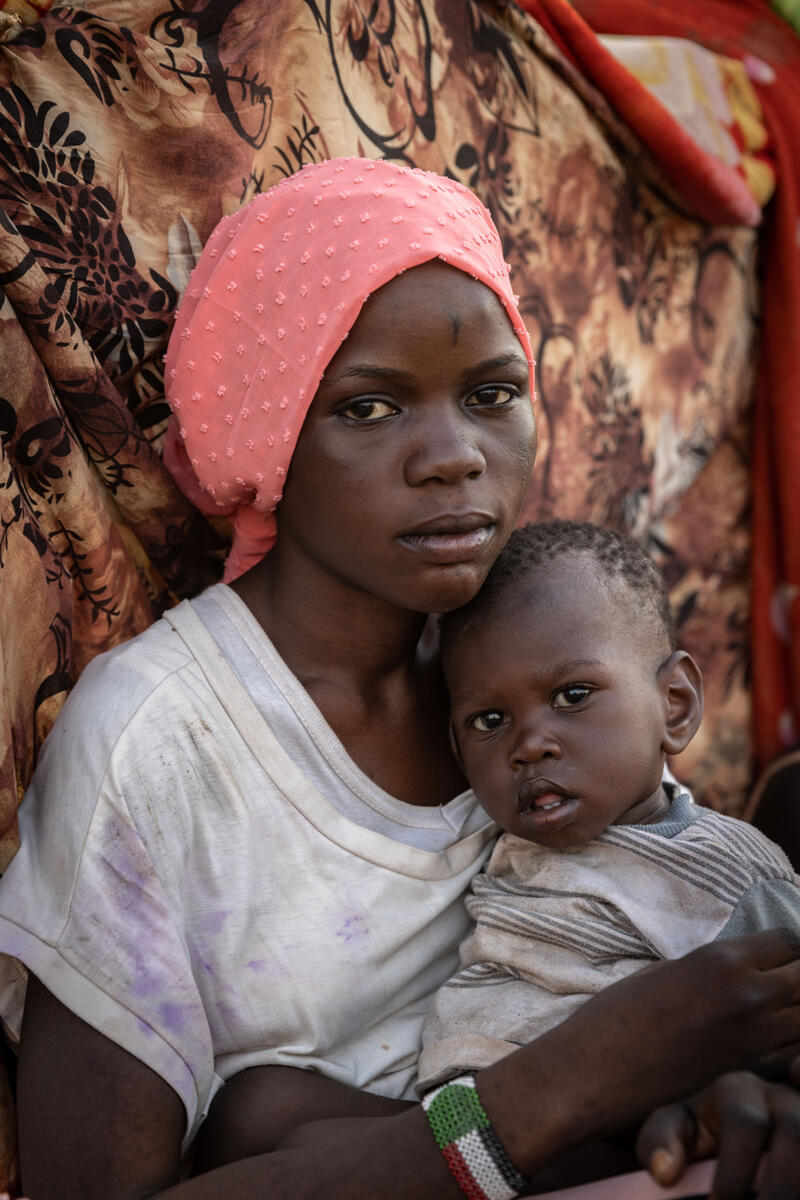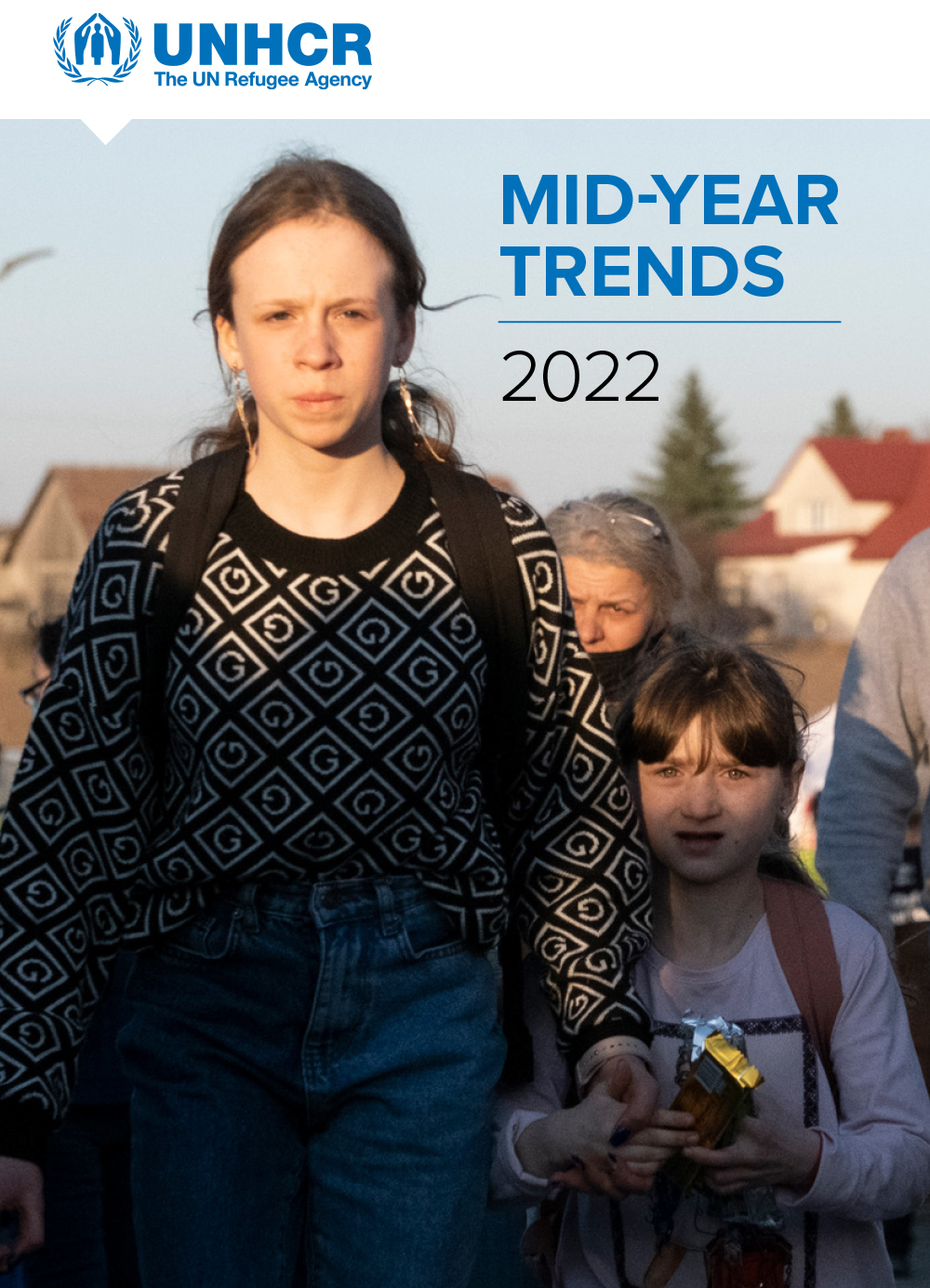Mid-Year Trends 2023
Mid-Year Trends 2023

Over 110 million people are forcibly displaced globally
At the end of June 2023, 110 million people worldwide were forcibly displaced from their homes due to persecution, conflict, violence, human rights violations and events seriously disturbing public order.
This represents an increase of more than 1.6 million people or 1 per cent compared to the end of 2022 (108.5* million). More than 1 in 73 people worldwide are now forcibly displaced as a result, with the majority – almost 9 in 10 – living in low- and middle-income countries.
In the first six months of the year, seven major displacement situations accounted for an estimated 90 per cent of new displacement globally. These include ongoing and new conflicts and humanitarian situations in Afghanistan, the Democratic Republic of the Congo, Latin America and Caribbean countries, Myanmar, Somalia, Sudan and Ukraine.
Based on UNHCR estimates, the number of people forced to flee has likely grown during the following three months, and at the end of September 2023, it is expected to have exceeded 114 million people.
People forced to flee | 2009 – mid-2023
Sudan conflict
In April 2023, war broke out between the Sudanese Army Forces and the Rapid Support Forces in the capital city Khartoum before quickly spreading to other parts of the country.
By the end of June 2023, more than 3 million people had been displaced within the country by the conflict. In addition, almost a quarter of a million Sudanese, along with over 163,000 people of other nationalities – mostly refugees previously living in Sudan – fled to neighbouring countries, primarily Chad and South Sudan.
Without a resolution to the crisis, UNHCR and its partners estimate that the number of refugees and returnees forced to flee could reach 1.8 million by the end of 2023.
Refugees
The global refugee population reached 36.4 million at mid-2023, an increase of 3 per cent (+1.1 million) from the end of 2022. This figure includes 5.9 million refugees under UNRWA's mandate and 30.5 million refugees and people in refugee-like situations under UNHCR's mandate. In addition, there were a further 5.3 million other people in need of international protection.
Of the refugees under UNHCR’s mandate, the Syrian refugee population continues to be the largest globally, as has been the case for the last decade. More than 6.5 million Syrian refugees were reported at mid-year in 130 countries, slightly fewer than at the end of 2022. This was followed by Afghanistan (6.1 million) and Ukraine (5.9 million).
At mid-year, the Islamic Republic of Iran and Türkiye each hosted 3.4 million refugees, the largest populations worldwide. Germany was the third largest refugee-hosting country with 2.5 million refugees.
As of mid-2023, there were 36.4 million refugees (5.9 million under UNRWA's mandate and 30.5 million under UNHCR's mandate).
Most people who are forced to flee want to return home once it is safe to do so. In the first half of 2023, 404,000 refugees were able to return.
Yes. The global refugee population has doubled within the last seven years, reaching 36.4 million people as of mid-2023.
Text and media 19
Nyauke | Returnee to South Sudan
Nyauke, 18, holds her one-year-old sister, Kuoli, at a UNHCR transit centre in South Sudan, after fleeing the conflict in Sudan with her mother and brother.
“Khartoum was so bad with the fighting. Men were shooting guns on our street and planes were dropping bombs around us.”
The family lived in Khartoum, Sudan, for nine years after initially escaping the civil war raging around their hometown of Bentiu in South Sudan. When the conflict broke out in Khartoum, they had to flee again.
They spent three days travelling in a truck to the border with South Sudan. Now, they plan to try to reach their hometown of Bentiu. "I remember it was a beautiful place when I was a kid," says Nyauke.
Internally Displaced People (IDPs)
Most people who are forced to flee never cross an international border, remaining displaced within their own countries. Known as internally displaced people, or IDPs, as of mid-2023 they account for 57 per cent of all forcibly displaced people.
An estimated 6.8 million new internal displacements occurred during the first six months of 2023, mostly in Sudan, the Democratic Republic of the Congo, Somalia, Ukraine and Myanmar.
UNHCR estimates that as of mid-2023, 62.2* million people remained internally displaced within their own country due to conflict or violence.
Most forcibly displaced people continue to remain within their countries: IDPs account for 57 per cent of the global forcibly displaced population.
An estimated 6.8 million new internal displacements occurred in the first six months of 2023, 83 per cent of which occurred in sub-Sahara Africa.
Solutions
Most spontaneous returns that took place in the first half of the year occurred in contexts not entirely conducive to return in safety and dignity, and they may not be sustainable. Just over 404,000 refugee returns were recorded, more than double the same period in 2022, with most returning to Ukraine-despite the ongoing international armed conflict- and to South Sudan from Sudan - most fleeing the outbreak of the war in Sudan.
At least 2.7 million people who were displaced within their own country (IDPs) also returned to their place of origin, more than double the returns during the same period last year, 1.1 million in Ukraine and a further 606,600 in Ethiopia following the cessation of fighting in the north of the country in late 2022.
Durable solutions for refugees in the first six months of each year | 2019-2023
The upcoming Global Refugee Forum in December 2023 will be an opportunity to further demonstrate solidarity with people forced to flee. The Forum will bring together States and other stakeholders to assess the progress towards the Global Compact on Refugees and announce new pledges towards achieving its goals, including financial and technical support. The outcome must contribute to strengthening the global response to record levels of displacement and the search for solutions.
Ukraine: 1/4 of the population remains displaced
More than a year after the full-scale invasion of Ukraine in February 2022, people continued to flee. In the first six months of 2023, more than 1.1 million Ukrainians were newly displaced, with just under half remaining within their country, and most others fleeing to other European countries.
However, during the same period, almost 1.1 million Ukrainian IDPs were able to return to their place of origin while 197,000 refugees also returned.
Overall, while the number of forcibly displaced Ukrainians declined slightly to 11 million, this equates to over one-quarter of the population still displaced at mid-2023.
Text and media 19
Fatima | Afghan refugee in Australia
“I have a second chance to be alive, to go for my education, to do my sport.”
Fatima, who is the captain of the Afghan Women's Football Team, was evacuated from Afghanistan in 2021 with her siblings on an emergency visa.
When the de facto authorities came to power in August 2021, it was no longer safe for her to show her face in public, let alone play football. The 19-year-old Hazara woman buried her jerseys and football trophies in the backyard and fled to the airport with her family.
Fatima has now settled in Melbourne, Australia, where she is studying and has a part-time job as an IT assistant.
“Playing soccer is magical for me. It's like a medicine that heals wounds of war and personal trauma. Especially when I'm on the field, I feel safe,” she says.
Download the report
Text and media 53
Mid-Year Trends 2023
UNHCR's Mid-Year Trends report presents the latest numbers of refugees, asylum-seekers, internally displaced and stateless persons worldwide.
About the UNHCR Global Trends and Mid-Year Trends reports
UNHCR releases two flagship statistical reports on global forced displacement each year, the Global Trends report and the Mid-Year Trends report.
The Global Trends report, released annually in June, analyses changes and trends in forcibly displaced populations in the previous calendar year (from 1 January to 31 December). It provides key statistics on the global numbers of refugees, asylum-seekers, internally displaced people and stateless people, as well as their main host countries and countries of origin.
In October each year, the Mid-Year Trends report is released to provide updated figures and analysis for the initial six months of the current year (from 1 January to 30 June). These figures are preliminary, and the final data is included in the subsequent Global Trends report released in June of the following year.
Learn more about UNHCR data collection and flagship publications.







